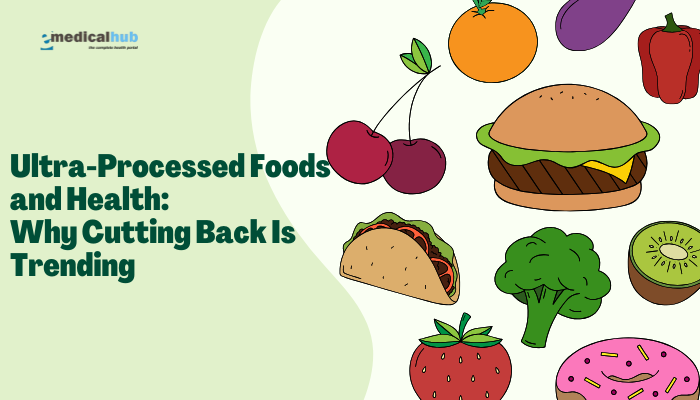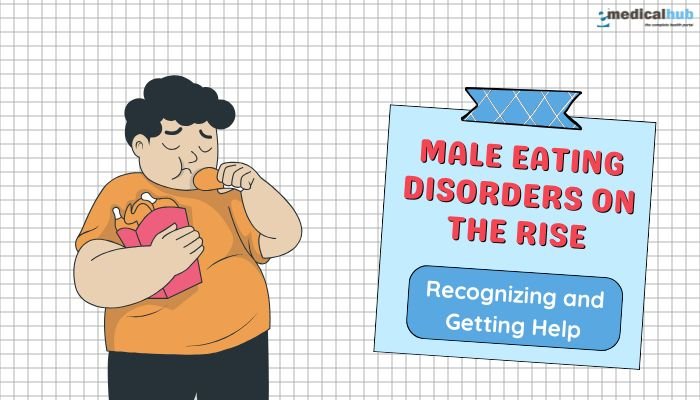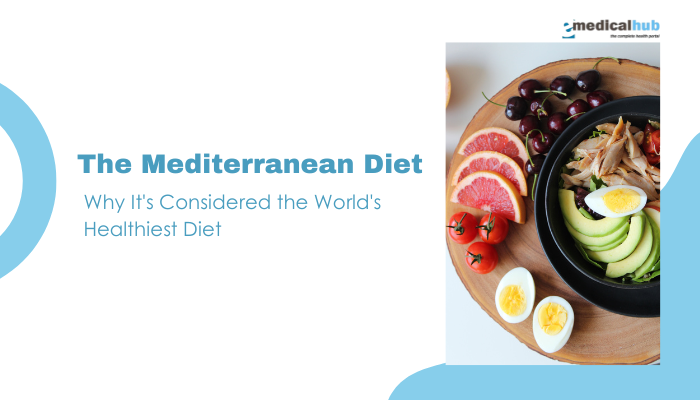Introduction
The modern food landscape is shaped by convenience, flavor enhancement, and long shelf lives – factors that have led to the widespread production and consumption of ultra-processed foods (UPFs).
Whether it’s breakfast cereal with a long ingredient list, heat-and-eat meals loaded with additives, or sweetened beverages full of artificial flavors, these products have become staples in many households due to their affordability and ease.
Yet increasing evidence suggests that diets high in these ultra-processed items may harm health, linking them to higher risks of obesity, cardiovascular disease, and even premature mortality.
In response, more health professionals and public figures are urging us to cut back on ultra-processed foods – a trend that’s steadily gaining traction. But what exactly characterizes an ultra-processed item? Why are they considered particularly detrimental compared to less-processed alternatives? And how can we practically reduce our dependence on them without sacrificing convenience or taste? This article digs into the definition of ultra-processed foods, explores the potential health impacts, and provides practical insights on how to shift toward more whole-food-based eating patterns.
Disclaimer: This content is for informational purposes and is not a substitute for professional medical or nutritional advice. If you have specific dietary concerns or health conditions, consult a healthcare provider or dietitian for personalized guidance.
Defining Ultra-Processed Foods
The NOVA Food Classification
One widely used system to categorize foods by their level of processing is the NOVA classification, developed by researchers in Brazil. NOVA splits foods into four groups:
- Group 1: Unprocessed or Minimally Processed Foods
- Examples: Fresh fruit, vegetables, milk, eggs, grains, legumes, meat with minimal processing (like plain poultry or fish).
- Processing methods like drying, freezing, or pasteurizing can preserve or modify these foods but don’t fundamentally alter their structure.
- Group 2: Processed Culinary Ingredients
- Examples: Oils, butter, sugar, salt – derived from natural foods but used to season or cook.
- Group 3: Processed Foods
- Examples: Canned vegetables, cheese, freshly baked bread, salted or cured meats.
- Foods made by adding Group 2 ingredients to Group 1, typically retaining much of their “original food” identity.
- Group 4: Ultra-Processed Foods
- Examples: Sugary breakfast cereals, candies, instant noodles, processed meats (like hot dogs), sweet or savory packaged snacks, soda, energy bars, many ready-to-eat or heat convenience meals.
- Often contain multiple additives such as colorings, flavorings, emulsifiers, preservatives, or sweeteners. The original whole food is largely unidentifiable.
Key Characteristics of UPFs
- Highly Formulated: They often contain complex mixtures of refined starches, hydrogenated oils, added sugars, artificial flavorings, and other synthetic additives.
- Minimal Whole Food Content: The base ingredients might be derived from substances such as refined flours or processed protein extracts.
- Hyper-Palatable: They’re designed to be appealing through strong flavors, sweeteners, or unique textures, encouraging overconsumption.
- Aggressive Marketing: Many come with bright packaging, brand promotions, and health claims that can obscure high sugar, sodium, or fat content.
The convenience and strong flavors can lead to frequent intake, overshadowing fresh, nutrient-dense foods in the diet.
Why the Concern about Ultra-Processed Foods?
Nutrient Imbalance
UPFs often deliver large amounts of energy (calories) with relatively low nutrient density. They tend to be:
- High in Added Sugars: Excess sugar consumption is linked to obesity, type 2 diabetes, and dental issues.
- High in Unhealthy Fats: Saturated fats and sometimes trans fats, raising cholesterol and heart disease risk.
- High in Sodium: Excess salt can elevate blood pressure, straining cardiovascular health.
- Low in Fiber: Refining removes bran and germ from grains, diminishing fiber that aids digestion and satiety.
Overeating and Palatability
Ultra-processed foods are formulated to be “hyper-palatable,” meaning they combine sugar, salt, fat, and flavor enhancers in ways that can bypass normal satiety signals. This can make it surprisingly difficult to eat moderate portions, potentially leading to excessive calorie intake and weight gain.
Links to Chronic Diseases
Numerous observational studies correlate higher UPF consumption with:
- Obesity and Overweight: Calorie-dense foods lacking beneficial nutrients encourage weight gain.
- Type 2 Diabetes: The synergy of high sugar, refined carbs, and poor overall diet quality fosters insulin resistance.
- Cardiovascular Disease: Freedman and colleagues show that diets heavy in processed snack foods and sugary beverages raise the risk of hypertension and coronary artery disease.
- Cancer Risk: Some studies suggest a correlation with certain cancers, possibly due to additives, pro-inflammatory fats, or obesity as a risk factor.
While correlation doesn’t always prove causation, the patterns are concerning.
The Growing Trend to Cut Back
Public Health Warnings
Government guidelines and health organizations increasingly emphasize minimally processed foods and warn about the excessive intake of sugar, salt, and unhealthy fats. The WHO, for instance, encourages limiting free sugars to below 10% (or better, 5%) of daily calories—a stance that often implicates many UPFs.
Consumer Awareness
Documentaries, social media campaigns, and wellness influencers highlight the detrimental impacts of high ultra-processed diets. The “clean eating” and “real food” movements have spurred interest in cooking from scratch, reading labels, and opting for local or organic produce.
Restaurant and Retail Shifts
- Grocery: More stores stock “natural, less processed” items, or have entire aisles focusing on organic or additive-free products.
- Fast Food: Some chains tout simpler ingredient lists or vow to remove certain artificial additives, responding to consumer demands.
While marketing can occasionally be misleading, these changes demonstrate a broader push to reduce or refine processed offerings.
Health Benefits of Reducing Ultra-Processed Foods
Improved Weight Management
Swapping chips or sweet cereal for whole grains, legumes, fruits, and vegetables increases nutrient density and satiety. Studies show that diets with fewer UPFs typically lead to lower total calorie intake and better weight control.
Balanced Blood Sugar
Complex carbohydrates with fiber slow glucose release into the bloodstream, preventing spikes. Minimally processed meals also reduce hidden added sugar that can disrupt insulin sensitivity.
Heart Health
Cutting down on sodium-laden convenience foods lowers blood pressure risk. Meanwhile, unprocessed whole foods supply beneficial fats, vitamins, and antioxidants that protect vascular function.
Reduced Inflammatory Markers
Many additives or pro-inflammatory fatty acids in processed items might contribute to chronic low-grade inflammation. A whole-food-based diet provides anti-inflammatory phytonutrients, potentially mitigating conditions like arthritis or certain autoimmune disorders.
Enhanced Mood and Energy
Though evidence is still emerging, many anecdotal accounts and some scientific data propose that stable blood sugar and nutrient-rich meals can aid mental clarity, consistent energy, and overall mood.
Practical Strategies to Limit Ultra-Processed Foods
Read Labels and Ingredient Lists
- Shorter the Better: If a product has a lengthy ingredient list with names you don’t recognize, it’s likely heavily processed.
- Watch for Sugars: Terms like sucrose, fructose syrup, maltodextrin, or HFCS signal high sugar content.
- Beware of Health Halos: “Low-fat” or “high-protein” doesn’t guarantee minimal processing or balanced nutrition.
Focus on Whole Meals
- Cook More at Home: Controlling recipes helps reduce reliance on commercial sauces and packaged mixes.
- Meal Prep: Batch-cook healthy staples like beans, brown rice, or roasted veggies to have them ready throughout the week.
- Use Basic Spices and Herbs: Instead of processed flavor packets that can hide salt and MSG, rely on fresh or dried herbs.
Gradual Swaps
- Bread: Choose 100% whole-grain or sourdough with fewer additives over white sandwich loaves with dough conditioners.
- Snacks: Replace chips or cookies with nuts, fruit, or plain popcorn (air-popped).
- Sugary Drinks: Use sparkling water or lightly flavored herbal teas to reduce soda intake.
- Processed Meats: Opt for fresh cuts of poultry, fish, or lean unprocessed meat (if you consume meat) over sausages or deli slices loaded with nitrates.
Diversify Flavors and Textures
One reason people gravitate to processed items is taste. Satisfy cravings with well-seasoned whole foods:
- Roast Veggies: Caramelizing brings out sweetness and complexity.
- Use Culinary Techniques: Sautéing, stir-frying, or marinating can deliver robust flavor.
- Experiment with International Recipes: Many global cuisines revolve around fresh ingredients, spices, and herbs to create variety without heavy processing.
Overcoming Common Barriers
Time Constraints
Cooking from scratch can be more time-consuming. Approaches:
- Batch Cooking: Prepare multiple servings at once to reheat later.
- One-Pot or Sheet-Pan Meals: Save cleanup and active time.
- Frozen Produce: Minimally processed, quick, and still nutrient-rich.
Cost Misconceptions
While some fresh produce or organic items can be pricey:
- In-Season Shopping: Seasonal vegetables and fruits tend to be cheaper.
- Bulk Staples: Dried beans, lentils, oats, or brown rice are cost-effective and unprocessed.
- Discount Stores / Farmers’ Markets: Often have deals on produce close to sell-by date or local bounty.
Social and Family Norms
- Meal Planning: Propose new unprocessed dishes as “taste tests,” gradually introducing them.
- Education: Gently share reasons for cutting back on processed items, involving your household in cooking or selection.
Hedonic Adaptation
Ultra-processed foods are hyper-palatable, leading to dulled taste for simpler, natural flavors. Over time, your taste buds can adjust, letting you appreciate the subtler natural sweetness or textures of whole foods.
Special Populations and Additional Considerations
Children
Excess processed snacks, cereals, or convenience meals in children’s diets can predispose them to obesity and poor dietary habits. Balanced exposure to whole fruits, vegetables, and homemade meals fosters a healthier palate and better nutrient intake.
Seniors
Elders might find convenience in ready meals but must watch sodium and ensure enough protein. Family or caregivers can help with easy, home-cooked batch meals or look for minimal-ingredient pre-packaged options.
People with Medical Conditions
- Diabetics: Minimizing refined carbs helps manage blood sugar.
- Hypertensive Patients: Lower sodium intake is crucial, found by limiting processed items.
- Celiac or IBS: Reading labels carefully is essential to avoid triggers like gluten or certain additives.
Real-World Examples: Step-by-Step Shifts
Example 1: From Processed Breakfast to Wholesome Start
Before: Sugary cereal + sweetened flavored yogurt
After: Oatmeal topped with fresh berries or a plain, unsweetened Greek yogurt swirl with fruit or honey drizzle. Possibly a side of whole wheat toast with nut butter for extra protein.
Example 2: Replacing Lunchtime Frozen Meal
Before: Microwavable mac & cheese dinner with additive-laden sauce
After: Quickly assembled homemade salad + leftover roasted chicken or chickpeas + homemade dressing in a small jar. The difference in additives and sodium can be vast.
Example 3: Transforming Dinner
Before: Fast-food burger with fries
After: Grass-fed ground beef (if you eat meat) or a black bean burger patty on a whole-grain bun, plus oven-baked sweet potato wedges. Avoid unnecessary flavor enhancers and MSG-laden sauces.
Frequently Asked Questions (FAQ)
Is it necessary to eliminate all processed items?
Total elimination isn’t always feasible or necessary. Moderation is key. Focus on drastically reducing “ultra-processed” staples and emphasizing more fresh, minimally processed alternatives.
Are “organic processed” items better?
Even organic-labeled snack foods can be ultra-processed if they contain multiple refined ingredients and additives. The “organic” label doesn’t always guarantee a healthy product—still check labels and overall nutritional value.
Are homemade baked goods considered ultra-processed?
Typically no, if the recipe uses standard, unprocessed ingredients (like whole wheat flour, eggs, minimal sugar). They are more akin to “processed foods” in the moderate sense, especially if using minimal additives. It depends on the recipe complexity.
How do I handle cravings for chips or cookies?
Try baking homemade versions with whole ingredients, or choose minimally processed options. Smaller portion sizes can satisfy cravings without heavy reliance on ultra-processed types.
Will I see immediate health changes once I cut down on ultra-processed foods?
Some improvements, like reduced bloating or more stable energy, may appear in weeks. Larger shifts in weight or chronic disease risk might be noticeable after months of consistent changes.
Conclusion
As the conversation around ultra-processed foods grows louder, more people realize the significance of not just macros or calories but also the quality and degree of processing in their daily meals. Heavily processed items often come jam-packed with excessive sugar, salt, unhealthy fats, and additives, yet short on essential nutrients—potentially contributing to weight gain, metabolic dysfunction, and a host of chronic ailments. Consequently, a rising movement to cut back on ultra-processed foods is well underway, driven by new research, public health messaging, and consumer demand for simpler, more transparent options.
While it might seem daunting to forgo convenience or personal favorites, the benefits of less processed choices—like improved energy levels, better weight control, and possibly lower disease risk—make it worth exploring. By reading labels carefully, prioritizing whole or minimally processed ingredients, cooking more at home, and adopting mindful dietary habits, you can find a healthier balance that still accommodates occasional treats. Ultimately, the objective isn’t about perfection but awareness: learning which foods fuel your well-being and forging a pattern of eating that supports a vibrant, healthy life.
References
- Monteiro CA, Moubarac JC, Levy RB, et al. Household availability of ultra-processed foods and obesity in nineteen European countries. Public Health Nutr. 2020;23(8):1486-1496.
- Srour B, Fezeu LK, Kesse-Guyot E, et al. Ultra-processed food intake and risk of cardiovascular disease: prospective cohort study. BMJ. 2019;365:l1451.
- Rauber F, Steele EM, da Costa Louzada ML, et al. Ultra-processed food consumption and chronic noncommunicable diseases-related dietary nutrient profile in the UK. Food Funct. 2020;11(2):1636-1648.
- Juul F, Martinez-Steele E, Parekh N, et al. Ultra-processed food consumption and excess weight among US adults. Br J Nutr. 2018;120(1):90-100.
- Fardet A. Minimally processed foods are more satiating and less hyperglycemic than ultraprocessed foods. A systematic review and meta-analysis. Eur J Nutr. 2021;60(1):1767-1787.
- Pagliai G, Dinu M, Madarena MP, et al. Consumption of ultra-processed foods and health status: a systematic review and meta-analysis. Br J Nutr. 2020;125(3):308-319.
- Moubarac JC, Batal M, Louzada ML, et al. Consumption of ultra-processed foods predicts diet quality in Canada. Appetite. 2017;108:512-520.
- Tavares LF, Fonseca SC, Garcia Rosa ML, et al. Relationship between ultra-processed foods and metabolic syndrome in adolescents from a Brazilian family doctor program. Public Health Nutr. 2012;15(1):82-87.
- WHO. Guideline: Sugars intake for adults and children. Geneva: World Health Organization; 2015.
- Mozaffarian D, Rosenberg I, Uauy R. History of modern nutrition science: implications for current research, dietary guidelines, and food policy. BMJ. 2018;361:k2392.
- Fardet A, Rock E. Ultra-processed foods: A new holistic paradigm? Trends Food Sci Technol. 2019;93:174-184.
- Scrinis G, Monteiro CA. Ultra-processed foods and the limits of product reformulation. Public Health Nutr. 2018;21(1):247-252.




